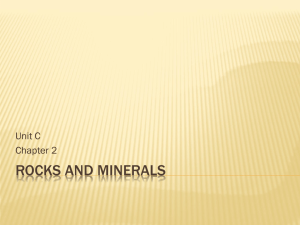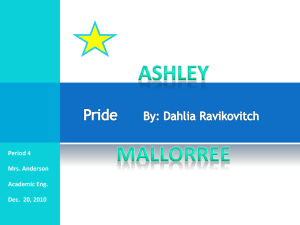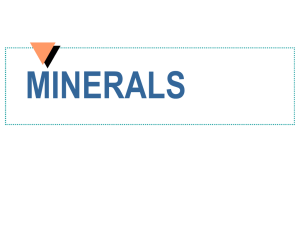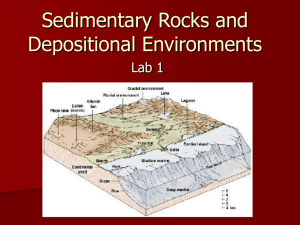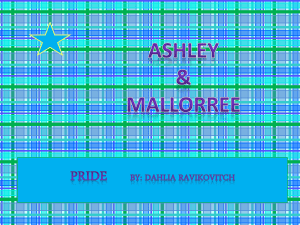Lesson PowerPoint - Lewiston Independent School District #1
advertisement
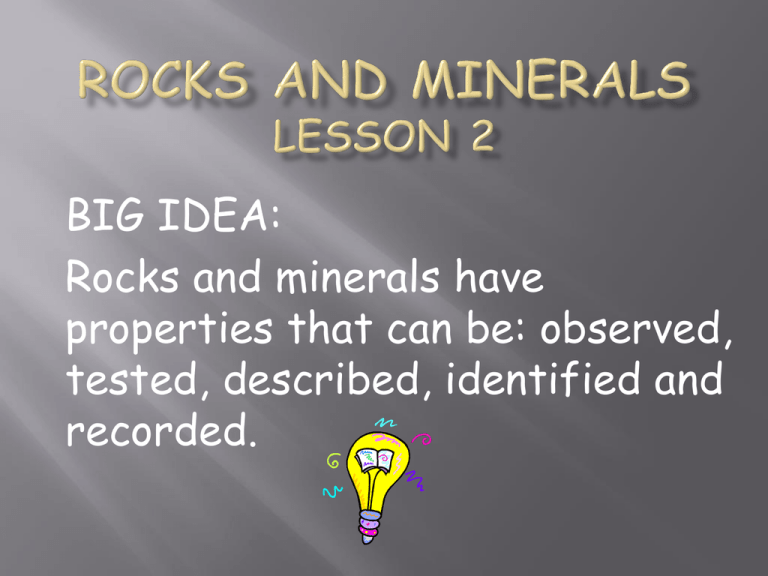
BIG IDEA: Rocks and minerals have properties that can be: observed, tested, described, identified and recorded. http://www.youtube.com/watch?v=iJArwENnfZE&featu http://www.youtube.com/watch?v=hAMBkoLhTBYre=related Mr. Maxwell gave the information you collected describing the physical properties of our rocks and minerals to his geologist friend last week. He was very impressed with your work and has provided us with more information and materials to help us further identify them. Since many of the materials in our collection share similar properties, he said we need to carry out some more investigations. One of the ways geologists identify rocks is by determining which earth processes were involved in the rocks formation and by dissecting them to identify the minerals and other components that make them up. The geologist has asked if we could investigate the earth processes by which rocks are formed and use the materials he sent us to make our own rocks. In a few weeks he will send us more information to help us identify the minerals and components that make up our rocks. What does the geologist want us to do? What did he give us to help? What is the problem in this investigation? How can we determine the ______________? How are we going to _____________? I think that ______________ because ________. I think we can build our on rocks by _________ because ____________. To investigate how rocks are formed we are going to add some new words to our word wall and look at some printed material that our geologist has sent us. Each of the rocks in Mr. Maxwell’s collection can be grouped by how they were formed. Word Wall: Sedimentary Rock Rocks that are made from sediments (minerals, pieces of other rocks) the sediment has accumulated in layers that have been squeezed and cemented together over time to form a solid material. Word Wall: Igneous Rock Rocks that are formed when melted molten material from inside the earth cools and hardens. Word Wall: Metamorphic Rock Rocks made of minerals from igneous, sedimentary, and other metamorphic rock that have been changed and combined by extremely high temperature and pressure. Word Wall: Petrifaction To become petrified or fossilized, the remains of the living material have been replaced with minerals and other chemicals. Read about the different types of rocks (sedimentary, igneous, and metamorphic) on pages 9-12 in your Delta Science book. Take notes on what you learned and be prepared to share with the class. Geologists know that rocks form naturally on earth by which processes? We cannot re-create the process by which rocks are formed naturally on earth, but we can use materials to simulate the formation of rocks. For this activity we are going to use minerals and other earth materials to make a sedimentary rock. The rock will form by a process called cementation. Materials for each group: • Plastic tray • 6 Tbsp clay • 4 Tbsp gravel • 2 Tbsp sand • 2 Tbsp talk • ½ Tbsp salt • 12 Tbsp alum • One cup of water with 2-4 Tbsp water • 1 tongue depressor • 1 of each mystery mineral per rock made Directions: Gather the proper amount of each sediment material in your plastic container Using the tongue depressor, mix the sediments and add just enough water so the mixture resembles cookie dough Divide the mixture into 4 rocks Add and bury the mineral/fossil materials in each individual rock Mold the dough into a rock and place group rocks on a plastic tray Place the tray in an undisturbed location until you are ready to begin lesson 9 (rock dissection and identification).



